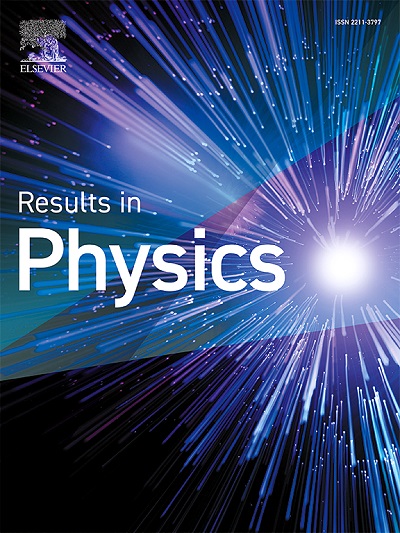Rectification properties of gold–alkanedithiol–graphene hybrid junctions: Enhancing performance through molecular engineering
IF 4.4
2区 物理与天体物理
Q2 MATERIALS SCIENCE, MULTIDISCIPLINARY
引用次数: 0
Abstract
In this study, we investigate the rectification properties of hybrid molecular junctions featuring gold and graphene nanoribbon (GNR) electrodes, with an alkanedithiol molecular wire covalently bonded to the gold electrode and the edges of the GNR electrode, aligned coplanarly with the GNR surface. By optimizing the alkanedithiol chain length and the edge configuration of the GNR electrode, we aim to enhance the rectification ratio (RR) and current–voltage (I–V) characteristics. Utilizing density functional tight-binding (DFTB) combined with the non-equilibrium Green’s function (NEGF) method, we analyze the transmission spectra and I–V properties of these hybrid junctions. Our findings highlight the significant influence of the GNR edges at the interface with alkanedithiol on rectification and transport behavior. Notably, the 1,4-butanedithiol molecular bridge between gold and armchair GNR electrodes achieves a rectification ratio exceeding three orders of magnitude, accompanied by low leakage current. Additionally, these junctions exhibit negative differential resistance (NDR) characteristics at specific bias voltages. These exceptional findings underscore the potential of optimized hybrid molecular junctions for stable, high-efficiency rectification and NDR applications.
求助全文
约1分钟内获得全文
求助全文
来源期刊

Results in Physics
MATERIALS SCIENCE, MULTIDISCIPLINARYPHYSIC-PHYSICS, MULTIDISCIPLINARY
CiteScore
8.70
自引率
9.40%
发文量
754
审稿时长
50 days
期刊介绍:
Results in Physics is an open access journal offering authors the opportunity to publish in all fundamental and interdisciplinary areas of physics, materials science, and applied physics. Papers of a theoretical, computational, and experimental nature are all welcome. Results in Physics accepts papers that are scientifically sound, technically correct and provide valuable new knowledge to the physics community. Topics such as three-dimensional flow and magnetohydrodynamics are not within the scope of Results in Physics.
Results in Physics welcomes three types of papers:
1. Full research papers
2. Microarticles: very short papers, no longer than two pages. They may consist of a single, but well-described piece of information, such as:
- Data and/or a plot plus a description
- Description of a new method or instrumentation
- Negative results
- Concept or design study
3. Letters to the Editor: Letters discussing a recent article published in Results in Physics are welcome. These are objective, constructive, or educational critiques of papers published in Results in Physics. Accepted letters will be sent to the author of the original paper for a response. Each letter and response is published together. Letters should be received within 8 weeks of the article''s publication. They should not exceed 750 words of text and 10 references.
 求助内容:
求助内容: 应助结果提醒方式:
应助结果提醒方式:


